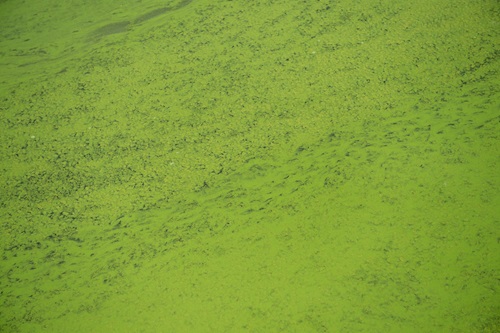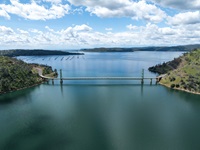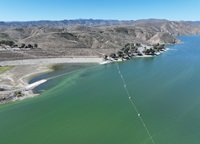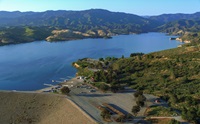Lake Oroville Update for August 2, 2024


A close-up photo of a blue-green algae bloom. DWR/2019
The California State Water Project (SWP), which is operated and maintained by the Department of Water Resources, spans 705 miles throughout California and offers a variety of recreational opportunities at several reservoirs. When blue-green algae, also known as cyanobacteria, are present in the waterways, DWR urges all recreational users to exercise caution and always avoid contacting algae. If the blue-green algae become a Harmful Algal Bloom (HAB), water activities will be impacted due to public safety concerns.
Blue-green algae are a natural part of the ecosystem. Algae can “bloom” or grow rapidly under ideal conditions, which include warm water temperature, calm conditions, and certain nutrients in the water. An algal bloom becomes harmful when it produces toxins.
Bloom conditions can change rapidly, and wind and waves may move or concentrate the bloom into different regions of a reservoir. Algal blooms can vary in characteristics from a variety of textures to colors as described below.
DWR monitors and regularly tests the SWP water for algal toxins. When tests are positive confirming a harmful algal bloom is present, advisories are posted on site, at the reservoir, and online. Once toxins are found, testing continues, and the posted health advisory and recommended precautions are not reduced until lab results show the HAB is declining and toxin levels have been below the level of concern for two weeks.
DWR urges recreational users, such as swimmers and boaters, to take the necessary precautions and always stay away from algae. While some algae are harmless, certain types can produce toxins that can make people and animals sick. There is no sure way to tell if an algal bloom is toxic just by looking at it, but there are indicators that a bloom may be harmful.
Information about caution, warning, and danger advisory signs. More information (also in Spanish) is available at the HABs portal.
| Reservoir | Status |
|---|---|
| Lake Oroville | Caution Advisory for Middle Fork |
| Thermalito Forebay | No Advisory |
| Thermalito Afterbay | No Advisory |
| Lake Del Valle |
No Advisory |
| Clifton Court Forebay | No Advisory |
| Bethany Reservoir | No Advisory |
| San Luis Reservoir | Caution Advisory |
| O'Neill Forebay | No Advisory |
| Los Banos Creek Reservoir | Caution Advisory |
| Quail Lake | Caution Advisory |
| Pyramid Lake |
Emigrant Landing Swim Beach - Warning Advisory Caution Advisory for all other areas of the lake, including Vaquero Swim Beach |
| Castaic Lake | Caution Advisory |
| Castaic Lagoon | No Advisory |
| Silverwood Lake |
No Advisory |
| Lake Perris |
No Advisory |
Maggie Macias, Information Officer, Public Affairs, Department of Water Resources
(916) 820-7662 | maggie.macias@water.ca.gov




Upper Castaic Lake closed today due to an elevated danger algal bloom advisory.

Today, the Department of Water Resources urges people to avoid physical contact with water at Castaic Lake in Los Angeles County until further notice due to the presence of blue-green algae.